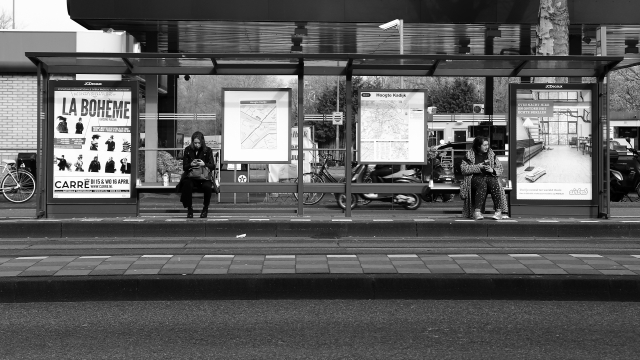I’ve been meaning to write this third post in the series for quite some time now, but my other commitments have kept me quite busy lately. Apologies about that – I do hope you weren’t waiting on me to proceed before trying out what we covered in Part 1 and Part 2 earlier. This third post will NOT focus on what rules to follow – rather, it will tell you when to break them! So, all you rebels out there, brace yourselves – this post is for you!
The “rules” covered in Parts 1 and 2 were not, strictly speaking, hard and fast rules but ‘guidelines’ or accepted practices in photography. Indeed, there are no such rules in photography. However, as we covered earlier, it is generally considered beneficial to create images that ‘comply’ with these guidelines. For instance, winning images in artistic competitions generally comply with the ‘rule of thirds’, use leading lines and feature an effective placement of “negative space” in the image. Moreover, winning photographers mind the background (and associated distractions) as much as they do the subject itself. So – within this context – when would disregarding these guidelines be an effective approach? That is the subject of this post.
Scenario 1: Symmetry
In some photographs, composing the image using the rule of thirds would in fact result in an image that is less effective than it would have been if composed “symmetrically”. The most typical, albeit not exclusive, example is a shot of a landscape reflected on a lake. Placing the horizon in the middle of the image creates a symmetric photo whereby the top part (the actual landscape) would be mirrored in the lake in an effective manner. Ditto for landscapes with rivers or the sea shown in them, where the river or sea equally create clearly visible mirror images.
This effect is not exclusive to photos where a lake, river or sea is present. The “mirror” effect can be obtained coincidentally, by design (e.g. architecture photography) or a mix of both. In my example below, there was an element of both: the architecture of the bus-stop was symmetrical by design, but the coincidental positioning of these two ladies created an added sense of ‘symmetry’ since they were sitting at (almost) opposite ends of the bus-stop. This created a double-symmetry effect which I like really much. In this image, the rule of thirds would never have resulted in an image with as much visual contrast.
Consider also the below example, showing four coloured benches at Qbajjar, in Gozo. Given the presence of symmetry by design in the layout of the footpaths and the benches, I used a symmetrical composition to accentuate the subtle differences (in colour) even further. After all, in a symmetrical image, it is these subtle differences that become the subject. Above, one would compare the different adverts, for instance, to the left and to the right. Similarly, one could compare the clothing worn. In the example below, the comparison turns to the benches themselves, and the coloured paint used. Thus, an effective use of symmetry can generate discussion, and that’s always a positive thing with photography!
Scenario 2: Thematic Considerations
Once again, the rule of thirds will bear the brunt of this ‘alternative’ scenario. I made a veiled reference to thematic considerations in my earlier posts, but here I will go into more detail. Sometimes, for theme-related purposes, you would do better avoiding the rule of thirds altogether. Let us recall the example mentioned in Part 1: suppose your brief is to create a portrait defining the trait of ‘assertiveness’ or domination. You would want your subject to be imposing, powerful, dominant or ‘unavoidable’ in the image you create, right? Now suppose you place the subject on a third, and you leave enough negative space to the left or right of the subject to ‘encourage’ roaming around the image. What would that result in? Right – it would mean the subject is not holding the viewer’s attention. It would also mean you would have likely failed your brief! In such a scenario, a central placement of the subject would “force” the viewer to focus on the subject. In other words, you are telling the subject to NOT look away. This goes counter to the idea of using the rule of thirds to encourage the viewer to ‘take it all in’.
For a practical example of this scenario, I will now point you to some advertising material used by Nike and the Canadian Paralympic Committee some years ago. These ad-campaign ‘invited’ persons to stop and stare at physically disabled persons – but not because of their disability: rather, they wanted to emphasise the persons’ ability in their respective sport or field. Moreover, the emphasis was that there was nothing else to focus on but the person in the image. Hence, central placement of the subject was used in all examples below. Try and look away when confronted with these images:
By capturing AND retaining the viewer’s attention, the advertiser’s message would have a higher likelihood to get across. And just as above, if it gets the person to consider the message, than you are communicating. And if your photo communicates, then it’s doing a pretty good job in my book!
Scenario 3: Creativity!!
The third ‘scenario’ practically covers everything else! Therefore, another “correct” answer to our opening question: “when NOT to use the rules” would be: whenever YOU want to! Sometimes, these rules stifle our creativity and by purposely opting NOT to follow them, you might find yourself being more creative! Of course, some images might turn out useless, but you might find that one-off image that stays with you, notwithstanding the amount of “rules” it breaks! For instance, I particularly like an image I had taken in my early days, of an old man walking in front of me, from left to right. The “rule” would be to place the man on a third, and leave negative space on the right (direction of travel), right? That would have yielded an acceptable result, albeit a boring one. What did I do? I composed the image in such a way to show the man heading out of the image, by placing him on the far right of the image. This changed the mood of the image completely, and sent a different message about the situation. It is as if the old man couldn’t be bothered, and just walked away, leaving it all behind. The message, given this compositional approach, seems more compelling and likely to evoke discussion than if it was just another ‘rule-abiding’ image of an old man walking from left to right,… right?
 So to conclude, let’s recap, as is usual practice.
So to conclude, let’s recap, as is usual practice.
Or let’s not. Let’s break this rule too! If you want a recap, scroll up! That’s why I use bold text. Now, will you be bold and break the rules too?


